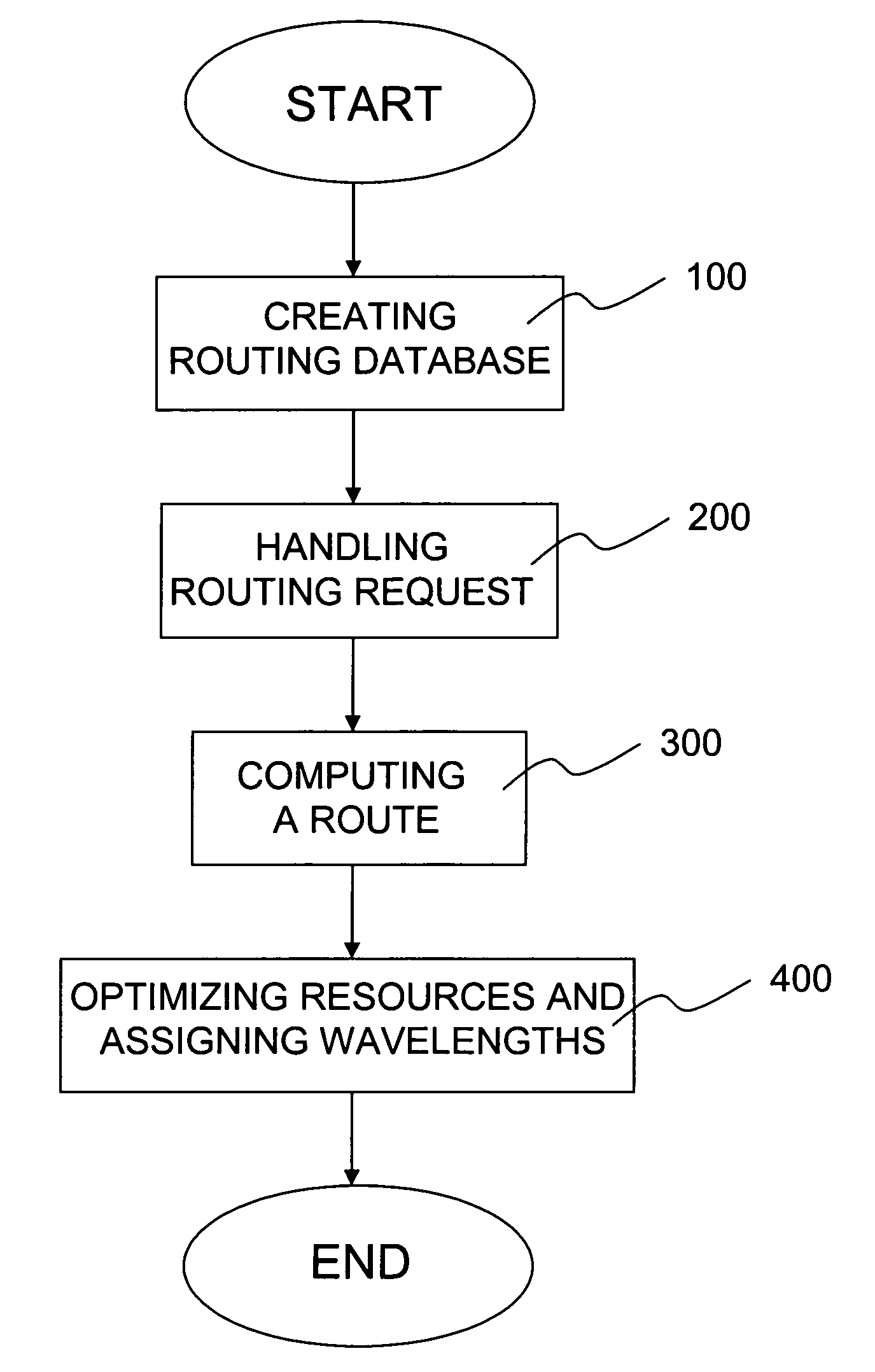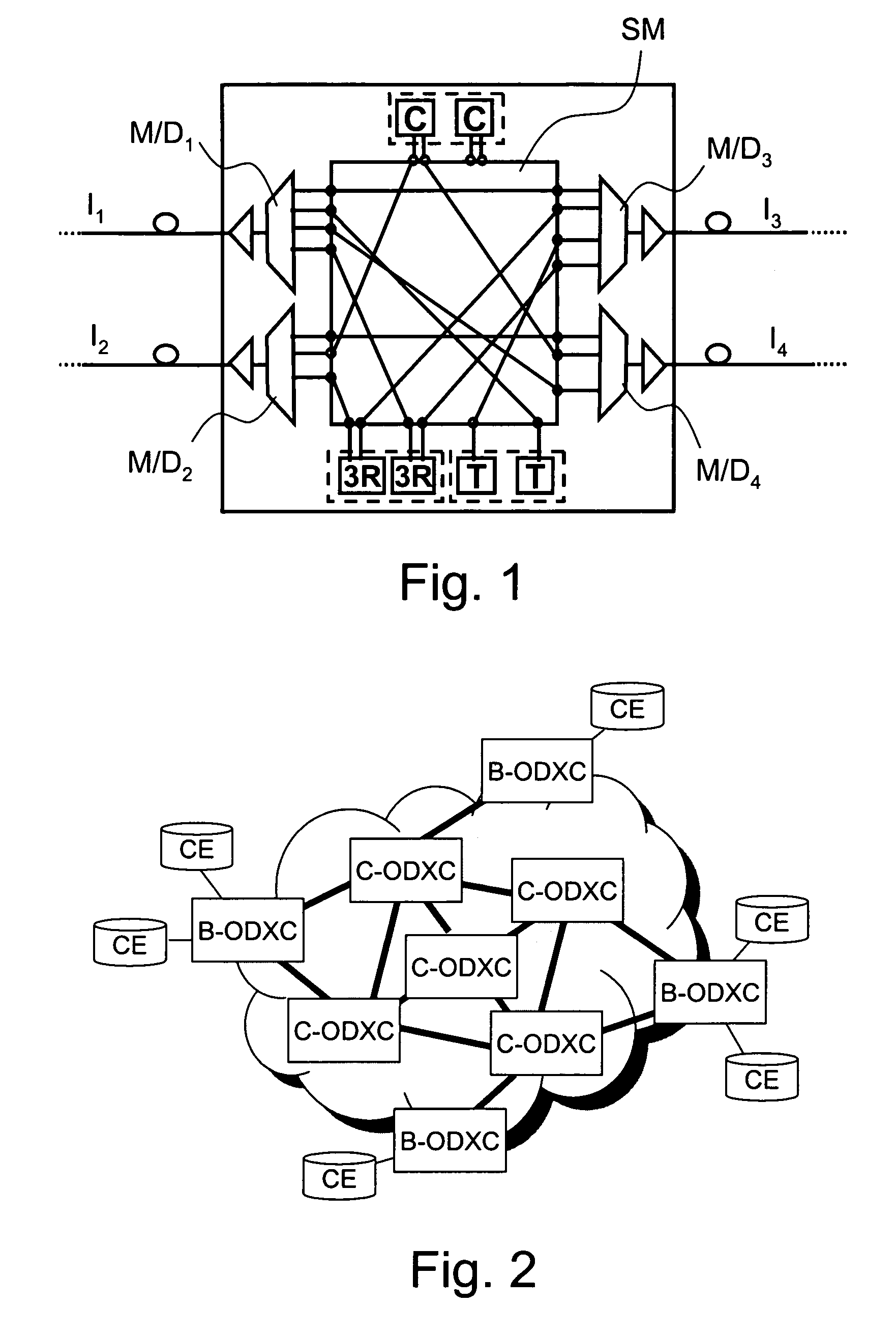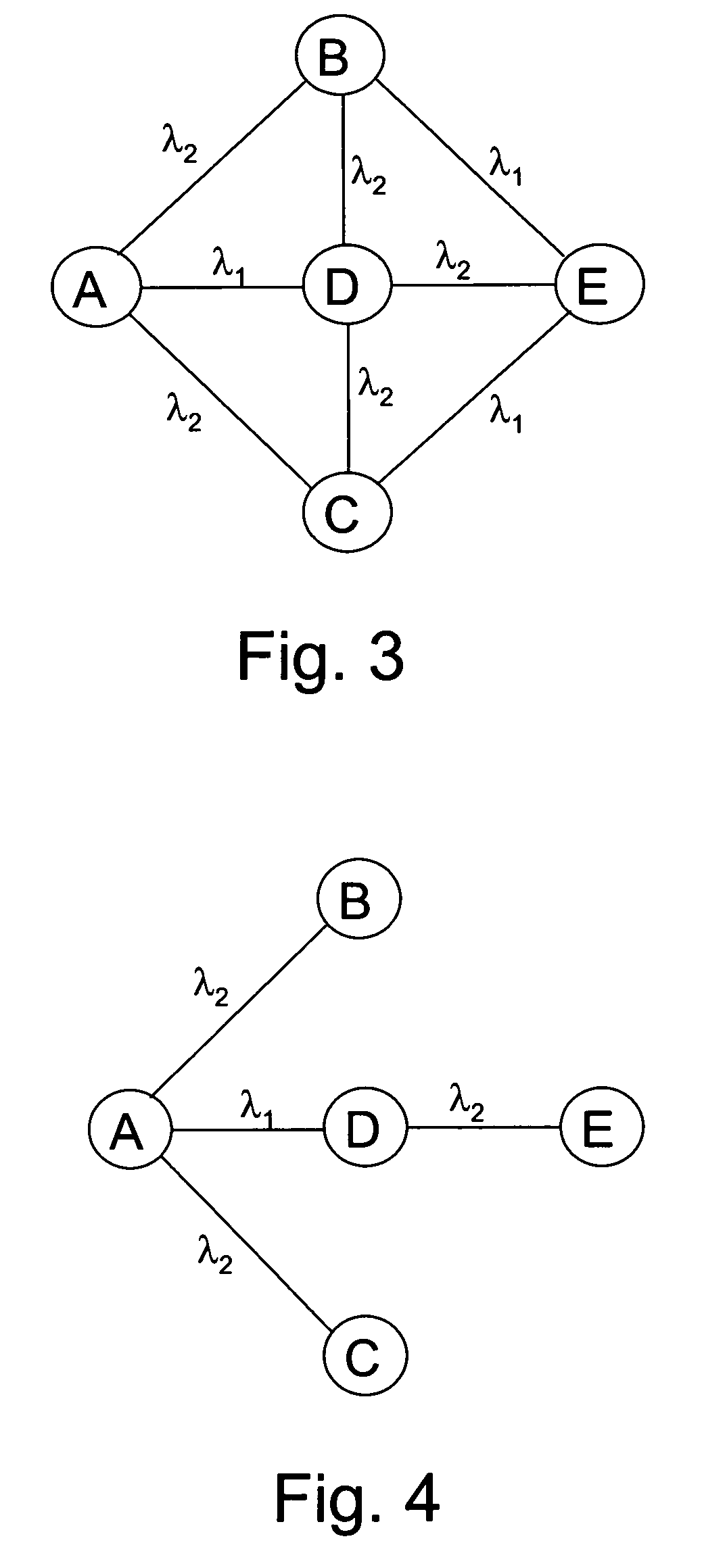Dynamic routing of optical signals in optical networks
a technology of optical networks and optical signals, applied in the field of dynamic routing of optical signals in optical networks, can solve the problems of high blocking probability on a congested network, inadequate transparent network, etc., and achieve the effect of eliminating the availability of the only link and minimizing the risk
- Summary
- Abstract
- Description
- Claims
- Application Information
AI Technical Summary
Benefits of technology
Problems solved by technology
Method used
Image
Examples
Embodiment Construction
[0080]With reference to FIG. 8 it is shown the flowchart of the main steps of the method according to a preferred embodiment of the present invention.
[0081]The main phases of the method are the following:[0082]Creating a Routing Database (RDB) (block 100);[0083]Handling a routing request (block 200);[0084]Computing a route (block 300); and[0085]Optimizing resources along the computed route and assigning the wavelengths (block 400).
[0086]Block 100 provides for the creation of the necessary preliminary information for route searching. In particular, block 100 comprises the following phases:[0087]collecting the topological information of the network and the nodes description; and[0088]computing a vector (a set of ordered values) for each bundle of homogenous interfaces (i.e. interfaces with the same characteristics with respect to routing purposes, e.g. TE-links) deployed in the network, the vector's elements quantifying the degradation that the optical signal undergoes in travelling o...
PUM
| Property | Measurement | Unit |
|---|---|---|
| wavelengths | aaaaa | aaaaa |
| wavelength | aaaaa | aaaaa |
| current | aaaaa | aaaaa |
Abstract
Description
Claims
Application Information
 Login to View More
Login to View More - R&D
- Intellectual Property
- Life Sciences
- Materials
- Tech Scout
- Unparalleled Data Quality
- Higher Quality Content
- 60% Fewer Hallucinations
Browse by: Latest US Patents, China's latest patents, Technical Efficacy Thesaurus, Application Domain, Technology Topic, Popular Technical Reports.
© 2025 PatSnap. All rights reserved.Legal|Privacy policy|Modern Slavery Act Transparency Statement|Sitemap|About US| Contact US: help@patsnap.com



